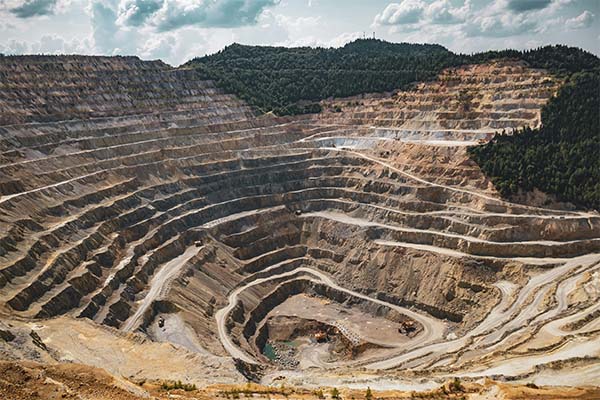I. Drilling Structure
1. Definition
The drilling structure refers to the changes in the diameter and length of a borehole from the initial opening to its final depth. This is also known as the technical profile of the borehole.
2. Components
Key elements of the drilling structure include:
-
Borehole diameter
-
Number of diameter changes
-
Number of casing layers
-
Pipe diameters and lengths
-
Depths at which diameter changes occur
-
Methods to seal the bottom of the casing
3. Requirements
To ensure drilling quality and safety:
-
Use high-quality mud, cement slurry, or chemical slurry for wall protection and sealing leaks.
-
Aim to minimize diameter changes and reduce or eliminate the need for casings, simplifying the drilling structure as much as possible.
4. Purpose of Casing
Casings are employed to isolate complex geological formations, ensuring stability during drilling.
5. Situations Requiring Diameter Changes and Casing
Diameter adjustments and casing installations are necessary in the following scenarios:
-
Drilling through loose gravel or quicksand layers where mud protection fails due to groundwater influence.
-
Passing through thick, fractured zones with developed joints, severe collapse, or block falling, where mud or other protection methods are ineffective.
-
Encountering water-bearing structures connected to large fissures, causing severe leakage that other water-stopping methods cannot address.
-
Reaching a depth where equipment load capacity requires a change in diameter.
6. Factors Influencing Drilling Structure Selection
The choice of drilling structure depends on:
-
Rock properties
-
Hydrogeological conditions
-
Final hole diameter
-
Drilling depth
-
Drilling method and purpose
-
Hole protection measures
-
Construction equipment
7. Drill String Configuration
The drill string configuration defines the relationship between the drill pipe diameter and the borehole diameter (drill bit diameter). This configuration determines the annular space size, which affects:
-
Drill pipe performance
-
Flushing fluid flow
-
Rotational resistance of the drill string
II. Basic Drilling Knowledge
1. Drilling Method
A drilling method is the collective term for techniques and measures used to break rock at the bottom of a borehole during underground drilling.
2. Drilling Technology
Drilling technology involves using specialized equipment and tools to break rock or soil, creating a smooth, regular borehole with a specific diameter and depth. It includes technical measures to ensure seamless drilling operations.
3. Classification of Drilling Methods
Drilling methods are categorized based on:
-
Rock-Breaking Force and Method: Rotary drilling, percussion drilling, rotary-percussion drilling.
-
Cutting Tool Material: Carbide drilling, steel shot drilling, diamond drilling.
-
Flushing Circulation Method: Direct circulation, reverse circulation, local reverse circulation at the borehole bottom.
-
Core Retrieval: Core drilling, full-face drilling.
4. How to Choose a Drilling Method
The selection of a drilling method depends on the rock’s physical and mechanical properties:
-
Soft and Some Medium-Hard Rock Layers: Use carbide drilling.
-
Medium-Hard to Hard Rock Layers: Opt for needle carbide, diamond composite, or steel shot drilling.
-
Medium-Hard to Very Hard Rock Layers: Employ diamond, steel shot, or down-the-hole hammer drilling.
5. Preparations Before Drilling
Before starting:
-
Prepare sufficient quantities of drill pipes, casings, directional pipes, drill bits, steel shots, oil, flushing fluid, assembly/disassembly tools, core retrieval tools, short core barrels, core boxes, and reports.
-
Inspect drilling equipment and installation quality thoroughly; repair, adjust, or reinstall if necessary—never compromise.
-
For deep holes, dig a pit at the opening to embed a directional pipe to prevent deviation, inserting casing after reaching bedrock. For shallow holes, use mud for protection; if collapse is severe, build artificial walls before casing insertion.
6. Precautions During Initial Drilling
During initial drilling:
-
Gradually extend the core barrel using light pressure, slow rotation, and appropriate pump volume. Use a comprehensive guide drill during diameter changes to prevent borehole curvature.
-
Watch for flushing fluid loss in overburden layers, which can destabilize the borehole wall and lead to accidents like stuck, buried, mud-packed, or burned drills.
-
Set casings on intact bedrock. Seal the casing bottom with tamped clay balls, fix the top with wooden wedges, and seal with clay (or cement if needed). Verify alignment by connecting the active drill pipe to the casing.
III. Drilling Technical Parameters (Drilling Procedures)
1. Definition
Drilling technical parameters are controllable factors that affect drilling efficiency and drill bit lifespan, along with their interrelationships.
2. Components
For general drilling methods, parameters include:
-
Drilling pressure (P)
-
Rotational speed (n)
-
Pump volume (Q)
Additional factors for specific methods: -
Steel Shot Drilling: Shot addition amount and method.
-
Rotary-Percussion Drilling: Impact interval, frequency, and energy.
3. Understanding
-
These parameters directly influence drilling efficiency and drill bit durability.
-
They can be adjusted based on formation conditions and drilling methods.
-
Parameters are interconnected and must work in harmony.
4. Classifications
-
Optimal Drilling Procedure: Parameter values that achieve the best technical and economic results under specific conditions.
-
Aggressive Drilling Procedure: Higher-than-normal parameter values for increased drilling speed (also called fast drilling).
-
Special Drilling Procedure: Restricted parameter values and special measures for specific purposes.
5. How to Control and Adjust Parameters
Adjustments depend on:
-
Downhole conditions (rock properties, borehole wall stability, depth, diameter, angle, drill bit type/wear, drill string condition, flushing fluid properties).
-
Operators must observe diligently, analyze skillfully, and leverage experience, as direct downhole observation is impossible.
IV. Ways to Break Rock in Drilling
1. Three Rock-Breaking Mechanisms
-
Surface Grinding: Occurs with insufficient drilling pressure, preventing the cutting tool from penetrating the rock—inefficient.
-
Fatigue Breakage: Slightly higher pressure creates surface cracks, requiring repeated action to break rock—low efficiency.
-
Volume Breakage: Adequate pressure ensures penetration, and rotational force causes shear breakage—most efficient.
2. Process of Volume Breakage
-
Penetration: The cutting tool presses into the rock.
-
Shearing: Rotational force breaks the rock through shearing action.


